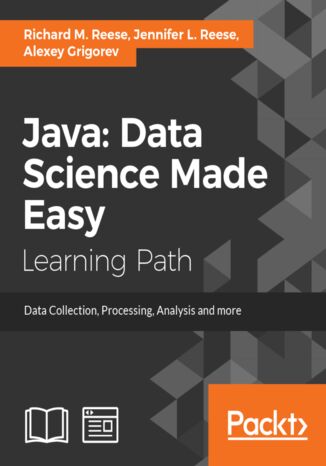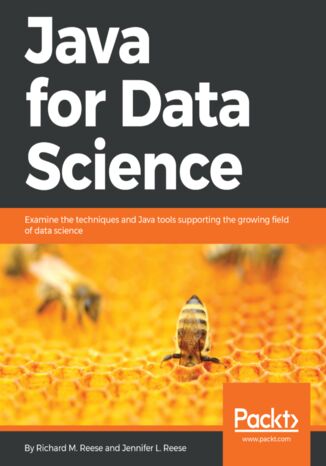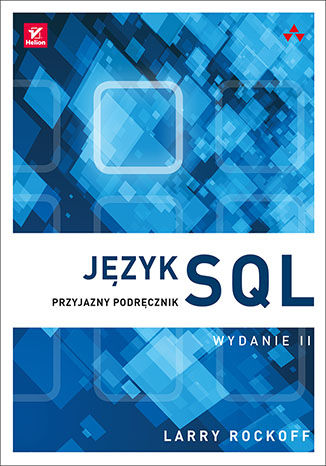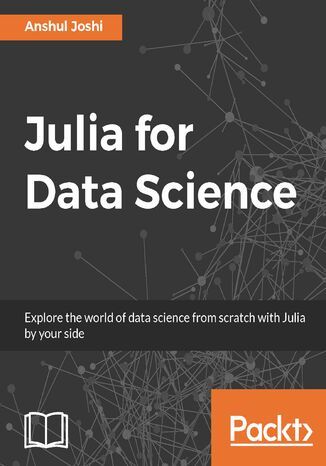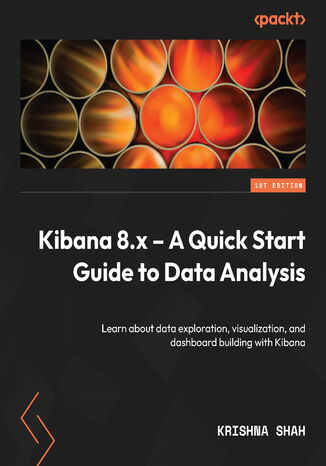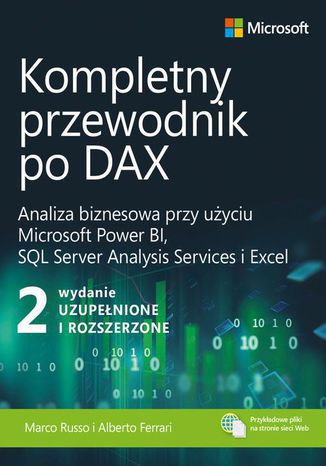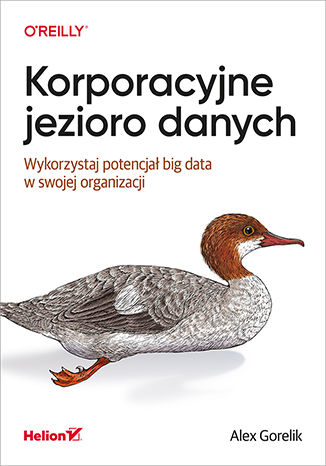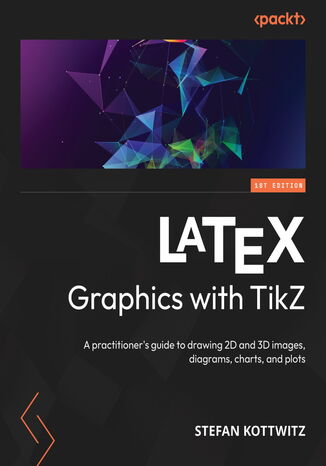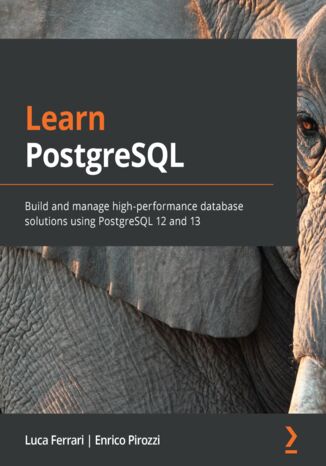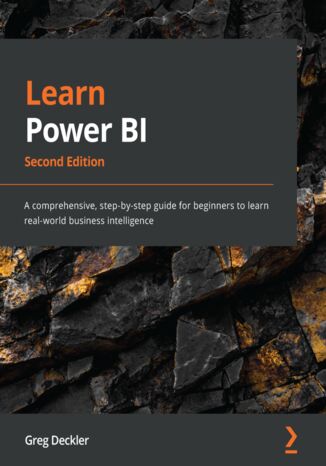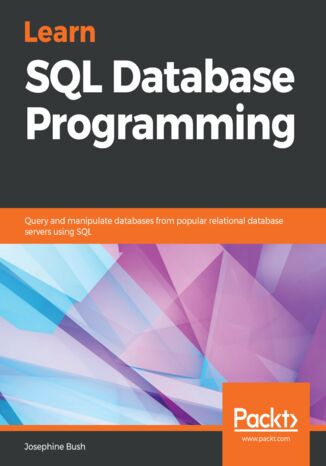Categories
-
- Bitcoin
- Businesswoman
- Coaching
- Controlling
- E-business
- Economy
- Finances
- Stocks and investments
- Personal competence
- Computer in the office
- Communication and negotiation
- Small company
- Marketing
- Motivation
- Multimedia trainings
- Real estate
- Persuasion and NLP
- Taxes
- Social policy
- Guides
- Presentations
- Leadership
- Public Relation
- Reports, analyses
- Secret
- Social Media
- Sales
- Start-up
- Your career
- Management
- Project management
- Human Resources
-
- Architektura i wnętrza
- Health and Safety
- Biznes i Ekonomia
- Home and garden
- E-business
- Ekonomia i finanse
- Esoterecism
- Finances
- Personal finance
- Business
- Photography
- Computer science
- HR & Payroll
- For women
- Computers, Excel
- Accounts
- Culture and literature
- Scientific and academic
- Environmental protection
- Opinion-forming
- Education
- Taxes
- Travelling
- Psychology
- Religion
- Agriculture
- Book and press market
- Transport and Spedition
- Healthand beauty
-
- Office applications
- Data bases
- Bioinformatics
- IT business
- CAD/CAM
- Digital Lifestyle
- DTP
- Electronics
- Digital photography
- Computer graphics
- Games
- Hacking
- Hardware
- IT w ekonomii
- Scientific software package
- School textbooks
- Computer basics
- Programming
- Mobile programming
- Internet servers
- Computer networks
- Start-up
- Operational systems
- Artificial intelligence
- Technology for children
- Webmastering
-
- Antology
- Ballade
- Biographies and autobiographies
- For adults
- Dramas
- Diaries, memoirs, letters
- Epic, epopee
- Essay
- Fantasy and science fiction
- Feuilletons
- Work of fiction
- Humour and satire
- Other
- Classical
- Crime fiction
- Non-fiction
- Fiction
- Mity i legendy
- Nobelists
- Novellas
- Moral
- Okultyzm i magia
- Short stories
- Memoirs
- Travelling
- Narrative poetry
- Poetry
- Politics
- Popular science
- Novel
- Historical novel
- Prose
- Adventure
- Journalism, publicism
- Reportage novels
- Romans i literatura obyczajowa
- Sensational
- Thriller, Horror
- Interviews and memoirs
-
- Archeology
- Bibliotekoznawstwo
- Cinema studies
- Philology
- Polish philology
- Philosophy
- Finanse i bankowość
- Geography
- Economy
- Trade. World economy
- History and archeology
- History of art and architecture
- Cultural studies
- Linguistics
- Literary studies
- Logistics
- Maths
- Medicine
- Humanities
- Pedagogy
- Educational aids
- Popular science
- Other
- Psychology
- Sociology
- Theatre studies
- Theology
- Economic theories and teachings
- Transport i spedycja
- Physical education
- Zarządzanie i marketing
-
- Health and Safety
- History
- Road Code. Driving license
- Law studies
- Healthcare
- General. Compendium of knowledge
- Academic textbooks
- Other
- Construction and local law
- Civil law
- Financial law
- Economic law
- Economic and trade law
- Criminal law
- Criminal law. Criminal offenses. Criminology
- International law
- International law
- Health care law
- Educational law
- Tax law
- Labor and social security law
- Public, constitutional and administrative law
- Family and Guardianship Code
- agricultural law
- Social law, labour law
- European Union law
- Industry
- Agricultural and environmental
- Dictionaries and encyclopedia
- Public procurement
- Management
-
- Africa
- Albums
- Southern America
- North and Central America
- Australia, New Zealand, Oceania
- Austria
- Asia
- Balkans
- Middle East
- Bulgary
- China
- Croatia
- The Czech Republic
- Denmark
- Egipt
- Estonia
- Europe
- France
- Mountains
- Greece
- Spain
- Holand
- Iceland
- Lithuania
- Latvia
- Mapy, Plany miast, Atlasy
- Mini travel guides
- Germany
- Norway
- Active travelling
- Poland
- Portugal
- Other
- Przewodniki po hotelach i restauracjach
- Russia
- Romania
- Slovakia
- Slovenia
- Switzerland
- Sweden
- World
- Turkey
- Ukraine
- Hungary
- Great Britain
- Italy
-
- Philosophy of life
- Kompetencje psychospołeczne
- Interpersonal communication
- Mindfulness
- General
- Persuasion and NLP
- Academic psychology
- Psychology of soul and mind
- Work psychology
- Relacje i związki
- Parenting and children psychology
- Problem solving
- Intellectual growth
- Secret
- Sexapeal
- Seduction
- Appearance and image
- Philosophy of life
-
- Bitcoin
- Businesswoman
- Coaching
- Controlling
- E-business
- Economy
- Finances
- Stocks and investments
- Personal competence
- Communication and negotiation
- Small company
- Marketing
- Motivation
- Real estate
- Persuasion and NLP
- Taxes
- Social policy
- Guides
- Presentations
- Leadership
- Public Relation
- Secret
- Social Media
- Sales
- Start-up
- Your career
- Management
- Project management
- Human Resources
-
- Antology
- Ballade
- Biographies and autobiographies
- For adults
- Dramas
- Diaries, memoirs, letters
- Epic, epopee
- Essay
- Fantasy and science fiction
- Feuilletons
- Work of fiction
- Humour and satire
- Other
- Classical
- Crime fiction
- Non-fiction
- Fiction
- Mity i legendy
- Nobelists
- Novellas
- Moral
- Okultyzm i magia
- Short stories
- Memoirs
- Travelling
- Poetry
- Politics
- Popular science
- Novel
- Historical novel
- Prose
- Adventure
- Journalism, publicism
- Reportage novels
- Romans i literatura obyczajowa
- Sensational
- Thriller, Horror
- Interviews and memoirs
-
- Philosophy of life
- Interpersonal communication
- Mindfulness
- General
- Persuasion and NLP
- Academic psychology
- Psychology of soul and mind
- Work psychology
- Relacje i związki
- Parenting and children psychology
- Problem solving
- Intellectual growth
- Secret
- Sexapeal
- Seduction
- Appearance and image
- Philosophy of life
- Ebooks
- Computer science
- Data bases
Data bases
Jak analizować dane z biblioteką Pandas. Praktyczne wprowadzenie. Wydanie II
Wprawny analityk potrafi się posługiwać zbiorami danych o wysokiej dynamice i różnorodności. Działanie to ułatwia biblioteka open source Pandas, która pozwala, przy użyciu języka Python, zrealizować niemal każde zadanie wymagające analizy danych. Pandas może pomóc w zapewnieniu wiarygodności danych, wizualizowaniu ich pod kątem efektywnego podejmowania decyzji i analizowaniu wielu zbiorów danych. Oto drugie, zaktualizowane i uzupełnione wydanie przewodnika po bibliotece Pandas. Dzięki tej przystępnej książce nauczysz się w pełni korzystać z możliwości oferowanych przez bibliotekę, nawet jeśli dopiero zaczynasz przygodę z analizą danych w Pythonie. Naukę rozpoczniesz z użyciem rzeczywistego zbioru danych, aby wkrótce rozwiązywać złożone problemy danologii, takie jak obsługa brakujących danych, stosowanie regularyzacji czy też używanie metod nienadzorowanego uczenia maszynowego do odnajdywania podstawowej struktury w zbiorze danych. Pracę z poszczególnymi zagadnieniami ułatwia to, że zostały one zilustrowane prostymi, ale praktycznymi przykładami. W książce: importowanie i eksportowanie danych, przygotowywanie ich zbiorów tworzenie wykresów za pomocą bibliotek matplotlib, seaborn i Pandas konwersja typów danych skalowanie operacji przetwarzania danych zaawansowane możliwości biblioteki Pandas powiązane z datami i czasem dopasowywanie modeli liniowych przy użyciu bibliotek statsmodels i scikit-learn Analizuj zbiory danych i odkrywaj ukrytą w nich wiedzę!
Java: Data Science Made Easy. Data collection, processing, analysis, and more
Richard M. Reese, Jennifer L. Reese, Alexey Grigorev
Data science is concerned with extracting knowledge and insights from a wide variety of data sources to analyse patterns or predict future behaviour. It draws from a wide array of disciplines including statistics, computer science, mathematics, machine learning, and data mining. In this course, we cover the basic as well as advanced data science concepts and how they are implemented using the popular Java tools and libraries.The course starts with an introduction of data science, followed by the basic data science tasks of data collection, data cleaning, data analysis, and data visualization. This is followed by a discussion of statistical techniques and more advanced topics including machine learning, neural networks, and deep learning. You will examine the major categories of data analysis including text, visual, and audio data, followed by a discussion of resources that support parallel implementation. Throughout this course, the chapters will illustrate a challenging data science problem, and then go on to present a comprehensive, Java-based solution to tackle that problem. You will cover a wide range of topics – from classification and regression, to dimensionality reduction and clustering, deep learning and working with Big Data. Finally, you will see the different ways to deploy the model and evaluate it in production settings.By the end of this course, you will be up and running with various facets of data science using Java, in no time at all.This course contains premium content from two of our recently published popular titles:- Java for Data Science- Mastering Java for Data Science
Richard M. Reese, Jennifer L. Reese
para 1: Get the lowdown on Java and explore big data analytics with Java for Data Science. Packed with examples and data science principles, this book uncovers the techniques & Java tools supporting data science and machine learning. Para 2: The stability and power of Java combines with key data science concepts for effective exploration of data. By working with Java APIs and techniques, this data science book allows you to build applications and use analysis techniques centred on machine learning. Para 3: Java for Data Science gives you the understanding you need to examine the techniques and Java tools supporting big data analytics. These Java-based approaches allow you to tackle data mining and statistical analysis in detail. Deep learning and Java data mining are also featured, so you can explore and analyse data effectively, and build intelligent applications using machine learning. para 4: What?s Inside ? Understand data science principles with Java support ? Discover machine learning and deep learning essentials ? Explore data science problems with Java-based solutions
Język SQL. Przyjazny podręcznik. Wydanie II
Najlepsze relacyjne bazy danych, takie jak Oracle czy MS SQL Server, są nierozłącznie związane z językiem SQL. Język ten stworzono po to, aby budować i użytkować bazy przechowujące ogromne ilości danych. Bez wątpienia SQL jest dość złożony, obejmuje wiele elementów i funkcji, jednak jego znajomość jest niezwykle ważna dla każdego, kto zajmuje się bazami danych, tworzy je czy nimi administruje. Również te osoby, które korzystają z narzędzi do raportowania w bazach danych, powinny przynajmniej dobrze zrozumieć podstawy tego języka. Niniejsza książka jest kolejnym wydaniem popularnego podręcznika, dzięki któremu zrozumiesz SQL, jego składnię i najważniejsze aspekty wykorzystywania. Poszczególne tematy zorganizowano w intuicyjny sposób, przedstawiając je w logicznej kolejności. Przykłady zastosowania języka dobrano tak, aby za pomocą małej próbki kodu umożliwić zrozumienie danej instrukcji SQL. W tym wydaniu zaktualizowano informacje o składni SQL stosowanej w Microsoft SQL Server 2016, MySQL 5.7 i Oracle 12c. Uzupełniono zagadnienia dotyczące logiki warunkowej, a także przedstawiono kilka nowych tematów, takich jak wspólne wyrażenia tablicowe czy wstawianie komentarzy do zapytań. Najważniejsze zagadnienia ujęte w książce: podstawowe informacje o relacyjnych bazach danych, składnia instrukcji SELECT i jej możliwości, agregacje danych i sum częściowych, stosowanie złączeń, podzapytań, widoków i logiki zbiorów, procedury składowane, aktualizacja danych i utrzymanie bazy, projektowanie baz danych i sposoby prezentacji danych. Poznaj SQL, a zrozumiesz bazy danych! Larry Rockoff jest ekspertem w dziedzinie języka SQL i analityki biznesowej. Specjalizuje się w stosowaniu narzędzi do raportowania w celu analizy danych znajdujących się w złożonych bazach danych. Ukończył studia MBA na Uniwersytecie Chicago. Jest autorem książek poświęconych językowi SQL i zastosowaniu oprogramowania Microsoft Access i Excel. Obecnie odpowiada za rozwój hurtowni danych oraz aplikacji służących do raportowania dla największej sieci aptek w USA.
Język SQL. Przyjazny podręcznik. Wydanie III
SQL stanowi podstawowe narzędzie komunikowania się z relacyjnymi bazami danych. Jest to dość skomplikowany język o rozbudowanych możliwościach. Pozwala na pobieranie z bazy zestawów danych wyszukiwanych na podstawie wyrafinowanych kryteriów. Umożliwia też modyfikację zarówno danych, jak i struktury bazy, w której są gromadzone. To potężne narzędzie powinni znać nie tylko programiści baz danych, ale również specjaliści zajmujący się ich analizą, jednak zdobycie praktycznych umiejętności posługiwania się SQL często nastręcza trudności. To trzecie, poprawione i zaktualizowane wydanie praktycznego przewodnika po języku SQL i relacyjnych bazach danych. Przemyślana, uporządkowana struktura podręcznika sprzyja sprawnemu nabywaniu wiedzy i doskonaleniu umiejętności - pracę z nim ułatwiają przystępny sposób prezentowania materiału i czytelne, łatwe do zrozumienia przykłady kodu SQL. Bardzo przydatnym elementem książki są odniesienia do składni (dialektów SQL) stosowanych w trzech najpowszechniejszych bazach danych: Microsoft SQL Server 2019, MySQL 8.0 i Oracle 18c. W tym wydaniu pojawiło się szersze omówienie typowych zadań analitycznych, uzupełniono też informacje o zastosowaniu Excela do wizualnej prezentacji danych, opisano więcej przydatnych funkcji, a także zaktualizowano i ulepszono dodatkowe materiały edukacyjne. W książce między innymi: operacje na danych przy użyciu zapytań SQL funkcje i procedury składowane grupowanie i agregowanie danych projektowanie relacyjnych baz danych tworzenie zestawień danych przy użyciu arkuszy kalkulacyjnych praca z Microsoft SQL Server, MySQL i Oracle Chcesz się nauczyć SQL? Z tą książką zrobisz to bez problemu!
jOOQ is an excellent query builder framework that allows you to emulate database-specific SQL statements using a fluent, intuitive, and flexible DSL API. jOOQ is fully capable of handling the most complex SQL in more than 30 different database dialects.jOOQ Masterclass covers jOOQ from beginner to expert level using examples (for MySQL, PostgreSQL, SQL Server, and Oracle) that show you how jOOQ is a mature and complete solution for implementing the persistence layer. You’ll learn how to use jOOQ in Spring Boot apps as a replacement for SpringTemplate and Spring Data JPA. Next, you’ll unleash jOOQ type-safe queries and CRUD operations via jOOQ’s records, converters, bindings, types, mappers, multi-tenancy, logging, and testing. Later, the book shows you how to use jOOQ to exploit powerful SQL features such as UDTs, embeddable types, embedded keys, and more. As you progress, you’ll cover trending topics such as identifiers, batching, lazy loading, pagination, and HTTP long conversations. For implementation purposes, the jOOQ examples explained in this book are written in the Spring Boot context for Maven/Gradle against MySQL, Postgres, SQL Server, and Oracle.By the end of this book, you’ll be a jOOQ power user capable of integrating jOOQ in the most modern and sophisticated apps including enterprise apps, microservices, and so on.
Julia for Data Science. high-performance computing simplified
Julia is a fast and high performing language that's perfectly suited to data science with a mature package ecosystem and is now feature complete. It is a good tool for a data science practitioner. There was a famous post at Harvard Business Review that Data Scientist is the sexiest job of the 21st century. (https://hbr.org/2012/10/data-scientist-the-sexiest-job-of-the-21st-century).This book will help you get familiarised with Julia's rich ecosystem, which is continuously evolving, allowing you to stay on top of your game.This book contains the essentials of data science and gives a high-level overview of advanced statistics and techniques. You will dive in and will work on generating insights by performing inferential statistics, and will reveal hidden patterns and trends using data mining. This has the practical coverage of statistics and machine learning. You will develop knowledge to build statistical models and machine learning systems in Julia with attractive visualizations.You will then delve into the world of Deep learning in Julia and will understand the framework, Mocha.jl with which you can create artificial neural networks and implement deep learning.This book addresses the challenges of real-world data science problems, including data cleaning, data preparation, inferential statistics, statistical modeling, building high-performance machine learning systems and creating effective visualizations using Julia.
Unleash the full potential of Kibana—an indispensable tool for data analysts to seamlessly explore vast datasets, uncover key insights, identify trends and anomalies, and share results. This book guides you through its user-friendly interface, interactive visualizations, and robust features, including real-time data monitoring and advanced analytics, showing you how Kibana revolutionizes your approach to navigating and analyzing complex datasets.Starting with the foundational steps of installing, configuring, and running Kibana, this book progresses systematically to explain the search and data visualization capabilities for data stored in the Elasticsearch cluster. You’ll then delve into the practical details of creating data views and optimizing spaces to better organize the analysis environment. As you advance, you'll get to grips with using the discover interface and learn how to build different types of extensive visualizations using Lens.By the end of this book, you’ll have a complete understanding of how Kibana works, helping you leverage its capabilities to build an analytics and visualization solution from scratch for your data-driven use case.
Kompletny przewodnik po DAX to najbardziej wyczerpujący i autorytatywny podręcznik języka Microsoft DAX w zastosowaniach BI i analityce. Podczas gdy inne książki omawiają tylko podstawy, ten przewodnik zapewnia wiedzę na poziomie eksperckim potrzebnych średnio i wysoko zaawansowanym użytkownikom Excela i profesjonalistom BI, od podstaw po innowacyjne techniki wysokiej wydajności. Dwaj czołowi konsultanci i wykładowcy Microsoft BI przedstawiają język DAX poprzez realistyczne i przydatne przykłady, prezentujące typowe obliczenia pozwalające użytkownikom od razu uzyskiwać wyniki. Alberto Ferrari i Marco Russo rozjaśniają złożone zagadnienia pokazując czytelnikom, co się dzieje pod maską silnika DAX, gdy wykonywane są wyrażenia. Ferrari i Russo starannie przechodzą przez typowe scenariusze, w których działanie DAX może być trudne do zrozumienia; pokazują, jak optymalizować modele danych, aby wyrażenia DAX były szybko wykonywane; demonstrują, jak pisać szybki i odporny kod DAX; wyjaśniają, jak usuwać wąskie gardła z istniejącego kodu. Pokazują działanie DAX zarówno w środowisku SQL Server, jak i Microsoft Excel, ułatwiając pracę bez względu na to, którą platformę Microsoft BI preferuje czytelnik.
WYDANIE DRUGIE uzupełnione i rozszerzone Najbardziej wyczerpujący przewodnik po języku DAX, obecnie rozszerzony i uzupełniony o najnowsze funkcje i nowoczesne zalecane praktyki, prezentujący opracowany w firmie Microsoft język na potrzeby analiz biznesowych i modelowania danych. Czołowi eksperci w dziedzinie Microsoft BI pomagają opanować wszystkie elementy systemu, od funkcji tablicowych po zaawansowany kod i optymalizację modelu. Dowiedz, co naprawdę dzieje się przy wykonywaniu poleceń DAX i jak użyć tej wiedzy do pisania szybkiego i niezawodnego kodu. Wydanie to skupia się na przykładach, które można budować i uruchamiać przy użyciu bezpłatnego narzędzia Power BI Desktop i pomaga wydobyć najwięcej korzyści ze składni zmiennych (VAR) w Power BI, Excelu lub Analysis Services. Pragniesz wykorzystać wszystkie możliwości języka ? To książka, której potrzebujesz. Wykonuj skuteczną analizę danych w programach Power BI, SQL Server i Excel Poznaj podstawowe koncepcje DAX, w tym kolumny obliczane, miary i obsługę błędów Wydajnie korzystaj z zaawansowanych funkcji tablicowych Opanuj istotę kontekstów wykonania oraz funkcje CALCULATE i CALCULATETABLE Wykonuj obliczenia czasowe i oparte na niestandardowych hierarchiach Korzystaj z grup obliczeń i elementów obliczanych Używaj składni zmiennych do tworzenia bardziej czytelnego, zrozumiałego kodu Wyrażaj różnorodne nietypowe relacje, w tym relacje wiele-do-wielu i filtry dwukierunkowe Opanuj zaawansowane techniki optymalizacyjne, aby zwiększyć wydajność agregacji Optymalizuj modele danych Mierz wydajność zapytań przy użyciu DAX Studio i dowiedz się, jak optymalizować kod DAX O tej książce Dla zaawansowanych użytkowników programu Excel oraz anlityków BI używających SQL Server Analysis Services lub Power BI O autorach Marco Russo i Alberto Ferrari są współzałożycielami strony sqlbi.com, w której regularnie publikują artykuły na temat Microsoft PowerPivot, DAX, Power BI oraz SQL Server Analysis Services. Występują też na głównych międzynarodowych konferencjach, takich jak TechEd, Ignite, PASS Summit czy SQLBits. Obydwaj wykładają teorię analizy biznesowej (BI) oraz technologie Microsoft BI począwszy od roku 1999. Książki ich autorstwa obejmują Excel 2013: Budowanie modeli danych przy użyciu PowerPivot, Analyzing Data with Power BI and Power Pivot for Excel oraz Introducing Microsoft Power BI.
Korporacyjne jezioro danych. Wykorzystaj potencjał big data w swojej organizacji
Koncepcja big data, nauka o danych i analityka danych wspomagają dziś procesy decyzyjne w przedsiębiorstwach w niespotykanym wcześniej zakresie. Zwiększają poziom efektywności pracy w wielu różnych branżach. Korporacje zaczęły więc eksperymenty z wykorzystaniem big data i technologii chmury, aby budować jeziora danych oraz tworzyć oparte na nich systemy podejmowania decyzji. Niejeden z tych projektów się nie powiódł, gdyż nie został dostosowany do kultury i potrzeb przedsiębiorstwa. Najwyraźniej zabrakło wiedzy, w jaki sposób skutecznie przeprowadzać tak radykalną transformację. Ta książka jest praktycznym przewodnikiem, który ułatwia wdrażanie architektury jeziora danych (ang. data lake) w przedsiębiorstwie. Omówiono tu różne podejścia do jej uruchamiania i rozwijania, w tym kałuże danych (analityczne piaskownice) i stawy danych (hurtownie danych), a także budowanie jezior danych od podstaw. Opisano konfigurowanie różnych stref, co pozwala na odpowiednie rozmieszczenie zarówno surowych, jak i starannie zarządzanych i przetworzonych danych. Wyjaśniono znaczenie zarządzania dostępem do stref. Zawarto tu również wskazówki umożliwiające zachowanie zgodności z regułami zarządzania danymi przedsiębiorstwa. W tej książce: wprowadzenie do hurtowni danych, big data i nauki o danych praktyczne techniki budowania jezior danych najlepsze praktyki dostarczania analitykom dostępu do danych projektowanie architektury jeziora danych oraz różne techniki implementacji zalety i wady różnych podejść do budowania magazynów danych i zarządzania nimi Jeziora danych i big data - ocean możliwości!
In this first-of-its-kind TikZ book, you’ll embark on a journey to discover the fascinating realm of TikZ—what it’s about, the philosophy behind it, and what sets it apart from other graphics libraries. From installation procedures to the intricacies of its syntax, this comprehensive guide will help you use TikZ to create flawless graphics to captivate your audience in theses, articles, or books.You’ll learn all the details starting with drawing nodes, edges, and arrows and arranging them with perfect alignment. As you explore advanced features, you’ll gain proficiency in using colors and transparency for filling and shading, and clipping image parts. You’ll learn to define TikZ styles and work with coordinate calculations and transformations.That’s not all! You’ll work with layers, overlays, absolute positioning, and adding special decorations and take it a step further using add-on packages for drawing diagrams, charts, and plots.By the end of this TikZ book, you’ll have mastered the finer details of image creation, enabling you to achieve visually stunning graphics with great precision.
When it comes to managing a high volume of unstructured and non-relational datasets, MongoDB is the defacto database management system (DBMS) for DBAs and data architects. This updated book includes the latest release and covers every feature in MongoDB 4.x, while helping you get hands-on with building a MongoDB database app.You’ll get to grips with MongoDB 4.x concepts such as indexes, database design, data modeling, authentication, and aggregation. As you progress, you’ll cover tasks such as performing routine operations when developing a dynamic database-driven website. Using examples, you’ll learn how to work with queries and regular database operations. The book will not only guide you through design and implementation, but also help you monitor operations to achieve optimal performance and secure your MongoDB database systems. You’ll also be introduced to advanced techniques such as aggregation, map-reduce, complex queries, and generating ad hoc financial reports on the fly. Later, the book shows you how to work with multiple collections as well as embedded arrays and documents, before finally exploring key topics such as replication, sharding, and security using practical examples.By the end of this book, you’ll be well-versed with MongoDB 4.x and be able to perform development and administrative tasks associated with this NoSQL database.
Learn PostgreSQL. Build and manage high-performance database solutions using PostgreSQL 12 and 13
PostgreSQL is one of the fastest-growing open source object-relational database management systems (DBMS) in the world. As well as being easy to use, it’s scalable and highly efficient. In this book, you’ll explore PostgreSQL 12 and 13 and learn how to build database solutions using it. Complete with hands-on tutorials, this guide will teach you how to achieve the right database design required for a reliable environment.You'll learn how to install and configure a PostgreSQL server and even manage users and connections. The book then progresses to key concepts of relational databases, before taking you through the Data Definition Language (DDL) and commonly used DDL commands. To build on your skills, you’ll understand how to interact with the live cluster, create database objects, and use tools to connect to the live cluster. You’ll then get to grips with creating tables, building indexes, and designing your database schema. Later, you'll explore the Data Manipulation Language (DML) and server-side programming capabilities of PostgreSQL using PL/pgSQL, before learning how to monitor, test, and troubleshoot your database application to ensure high-performance and reliability.By the end of this book, you'll be well-versed with the Postgres database and be able to set up your own PostgreSQL instance and use it to build robust solutions.
To succeed in today's transforming business world, organizations need business intelligence capabilities to make smarter decisions faster than ever before. This updated second edition of Learn Power BI takes you on a journey of data exploration and discovery, using Microsoft Power BI to ingest, cleanse, and organize data in order to unlock key business insights that can then be shared with others.This newly revised and expanded edition of Learn Power BI covers all of the latest features and interface changes and takes you through the fundamentals of business intelligence projects, how to deploy, adopt, and govern Power BI within your organization, and how to leverage your knowledge in the marketplace and broader ecosystem that is Power BI. As you progress, you will learn how to ingest, cleanse, and transform your data into stunning visualizations, reports, and dashboards that speak to business decision-makers.By the end of this Power BI book, you will be fully prepared to be the data analysis hero of your organization – or even start a new career as a business intelligence professional.
SQL is a powerful querying language that's used to store, manipulate, and retrieve data, and it is one of the most popular languages used by developers to query and analyze data efficiently.If you're looking for a comprehensive introduction to SQL, Learn SQL Database Programming will help you to get up to speed with using SQL to streamline your work in no time. Starting with an overview of relational database management systems, this book will show you how to set up and use MySQL Workbench and design a database using practical examples. You'll also discover how to query and manipulate data with SQL programming using MySQL Workbench. As you advance, you’ll create a database, query single and multiple tables, and modify data using SQL querying. This SQL book covers advanced SQL techniques, including aggregate functions, flow control statements, error handling, and subqueries, and helps you process your data to present your findings. Finally, you’ll implement best practices for writing SQL and designing indexes and tables.By the end of this SQL programming book, you’ll have gained the confidence to use SQL queries to retrieve and manipulate data.


